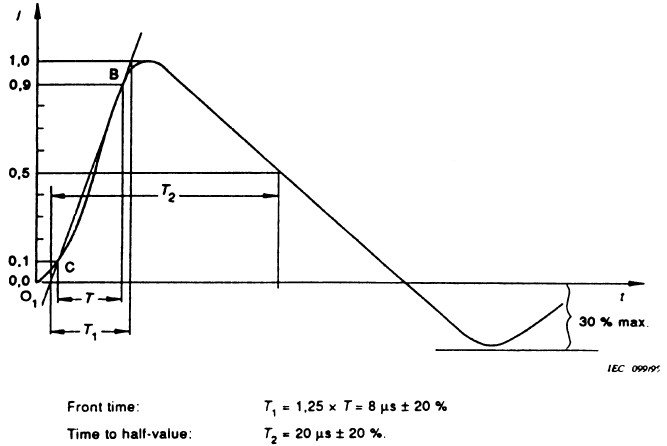In this article, we will delve into the implementation and analysis of a versatile Combination Wave Generator SPICE simulation template. This template forms the groundwork for a range of applications including Surge Generators, Line Impedance Stabilization Networks (LISN), motor control, and ripple current analysis. Hardware engineers can capitalize on this model to streamline project development efforts.While using PSpice for simulation, you can effortlessly apply the fundamental principles of the Combination Wave Generator SPICE simulation template to various other SPICE simulation software platforms.
A “Combination Wave Generator” finds its application in Electromagnetic Compatibility (EMC) tests, generating specific waveform voltage or current pulses. Its purpose is to assess electronic devices’ electrical resilience and responses to abrupt variations or transients within the electromagnetic environment. These generators replicate transient electrical disruptions or surges that might manifest in electronic circuits during situations like electrostatic discharges, switching transients, or line surges.
The Combination Wave Generator is an essential component of EMC compliance tests, ensuring that electronic devices can operate in realistic electromagnetic environments without sustaining damage or unforeseen behaviors.
Simplified SPICE Model of Combo Wave Generator.
The simplified model of the CWG consists of an High-Voltage source U, a charging resistor Rc, an energy storage capacitor Cc. This part of circuit is connected by a switch to 2 Pulse duration shaping resistors Rs, an impedance matching resistor Rm and a Rise time shaping indutor Lr, as in the picture below

typical values of this components are: Cc=7.76μF, Rs1=14.8 Ohm, Rm=1.05 Ohm, Lr=9.74μH, Rs2=23.3 Ohm. The peak voltage on Rs2 can be 1KV, 2KV,..6KV.
In the following schematic we set the high voltage with the initial condition of the CapacitorCc, for example for 6KV, we set 6300 in the PSpice IC field of the Cc component. We can adjust the time in U1 to make surge hit at 90/270 degree or whatever phase we want.
Calibration of Surge Generator.
The IEC/EN 61000-4-5 standars requires the following waveform of open-circuit voltage with no Coupling/Decoupling network (CDN) connected

This is the result of the simulation that shows a voltage waveform that fullfills requirementof IEC/EN 61000-4-5

Below the image of the waveform of short-circuit current with no CDN connected

and here again the simulated results:

Ipeak is about 1.5KA, T1 is 8uS and T2 is 20uS. The effective coupling impedance is 2Ohm. The simulated current waveform fulfills requirement of IEC/EN 61000-4-5 standards.



